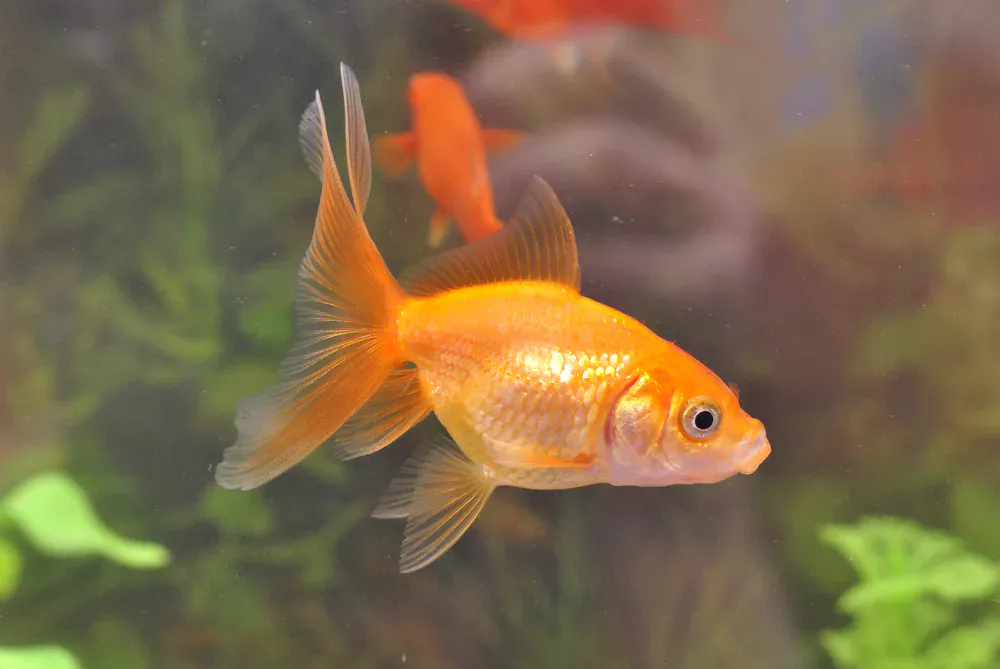We all know goldfish are a great pet to have at home. They brighten up your house and provide you with lots of entertainment. Goldfish can also be a source of joy if you take good care of them. The best way to take care of goldfish is by making sure they are always healthy. This article will help you identify the signs and symptoms that mean your goldfish is having a healthy life in the aquarium.
What Does A Healthy Goldfish Look Like?
A healthy goldfish has a shiny, smooth, and silvery body. Its eyes are clear and bright, its fins are bright and erect, the body is rounded, the gills are pink, red, or orange and its fins are red or orange.
Signs & Symptoms Of A Healthy Goldfish
Here are some of the common signs and symptoms that mean your goldfish is having a healthy life in the aquarium.
1- Eats Well
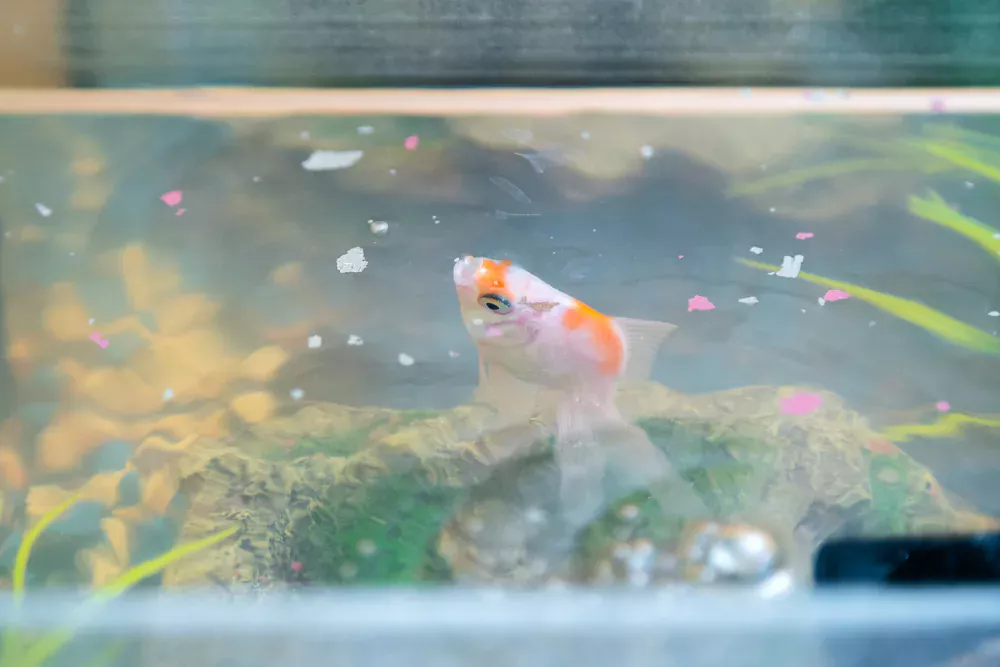
A healthy goldfish is an active eater, and it’s important that you feed it a variety of foods to keep its diet varied. A goldfish can eat flakes, pellets, live and frozen foods like bloodworms or daphnia, or brine shrimp (just remember not to give your goldfish too much high in protein diet).
It may be that your fish has already been eating well for some time now but has suddenly stopped eating altogether. This can often happen when the water quality becomes poor and an infection develops within their body which makes them feel sick. If this happens then you’ll want to try increasing the amount of oxygen in your aquarium because low oxygen level is often responsible for making them refuse food.
2- Clear Eyes

This is one of the most important things to check for when looking at a goldfish’s health. A healthy goldfish should have clear eyes. They should not look cloudy or yellow at all! If their eyes are cloudy or yellow, they may be suffering from an infection, which is dangerous for the fish.
3- Don’t Have Any Patches On Their Body
Although, patches on the body or fins do not necessarily mean that your fish is sick. It could be a sign of stress as well. Just to keep in mind, there are a few diseases that affect the goldfish body and leaves patches on it. The presence of these patches can also be caused by the environment in which they live. If you have recently changed their water or if your aquarium has been exposed to stronger lights, then this may be the reason behind the appearance of these black spots on them.
4- No Shaking Or Rubbing Against Objects
Does your goldfish rub itself against objects in the aquarium? If so, this is a sign of irritation. Your fish may be rubbing itself against objects in an attempt to remove parasites or other irritants from its body. In some cases, it could also be causing damage to its fins and scales.
Fish that are too small for their tank may rub their bodies against rocks or gravel because they feel crowded. This can cause infections in the damaged areas of their bodies and make them more susceptible to illness from bacteria entering those wounds.
5- A Healthy Schooling Habit
Goldfish are social creatures. They enjoy being in groups with other goldfish, and they feel happier when they are around other members of their species. They can keep each other safe from predators (in wild) and dangerous situations.
Goldfish can keep each other entertained by swimming and eating at the same time, which makes them happy. They often form schools so that they can keep each other warm during cold situations or when an aquarium heater isn’t working properly.
6- Having An Active Swimming Pattern
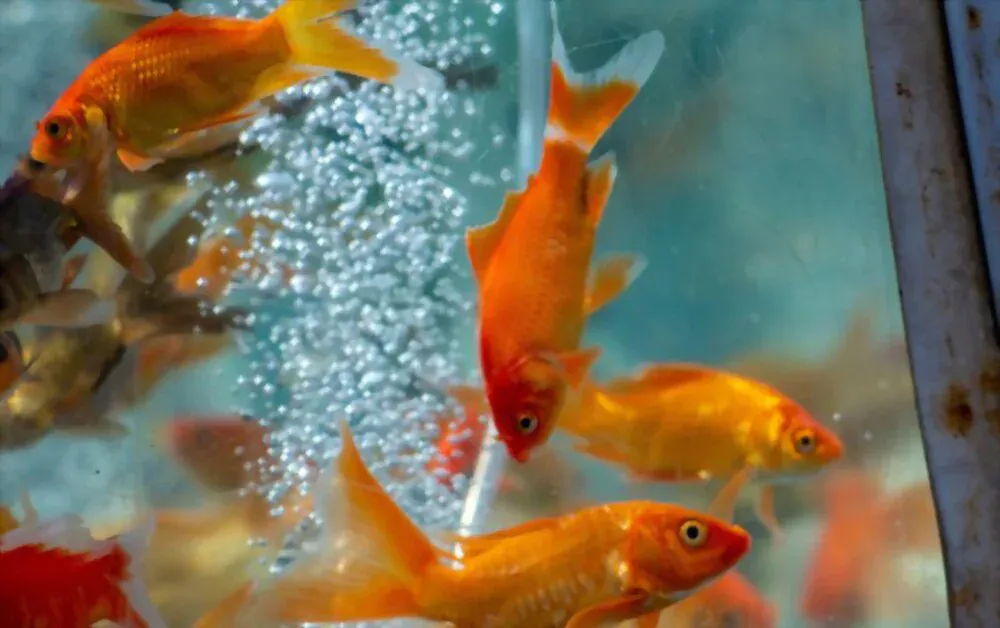
A sixth sign that your goldfish is healthy is an active swimming pattern. This can be difficult to identify, but if you are familiar with the way your goldfish swims normally, it will be easier to notice any changes. An active swimming pattern means that your fish is not just sitting on the bottom of the tank or floating near plants and decorations. It is actually moving around.
If your fish has just been introduced into a new tank or has been ill for some time, then you may not see this behavior right away. In fact, sometimes when introducing new fish into an aquarium system it takes weeks for them to become more energetic and start moving around as they normally do.
7- Proper Body Shape
The tail length is the measurement from the back of the head, just above their pectoral fins, to their tail fin. A healthy goldfish should have a straight-edged tail and it should be approximately half as long as the body is wide. If your fish has a rounded or curved tail then this may indicate that it is ill and you should seek veterinary advice immediately.
If you notice your fish has a large round belly then this can indicate either that they are pregnant or constipated (this happens when they eat too much food). If it’s just one small piece of food then don’t worry because most likely they will pass it in time, but if it keeps happening after several days then contact a vet who can prescribe medication to help them pass it naturally without harming themselves in any way.
8- Healthy Mouth
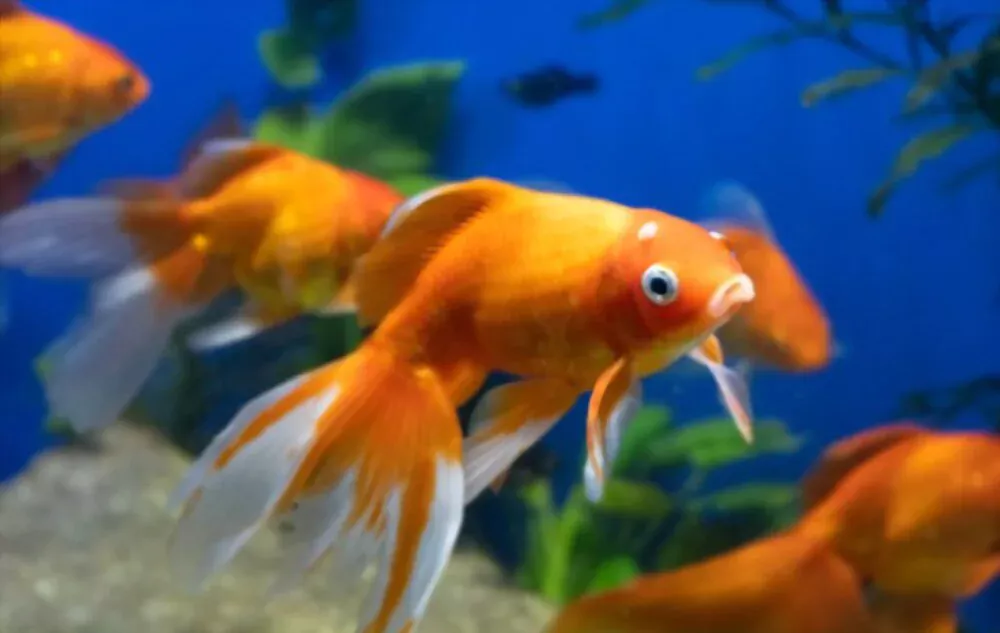
Your goldfish should have a healthy mouth. If your goldfish’s mouth is red, it may be due to poor water quality or a poor diet. This could also be caused by an injury or internal parasites. If you see white spots on the lips or gills of your fish, it could mean they are suffering from a bacterial infection which can be treated with antibacterial medication.
Your goldfish will likely become bloated if they have been infected with this problem before because this illness takes up space inside their body cavity so there isn’t room left for normal tissue growth like organs or muscles.
9- Clean And Smooth Scales
Smooth, shiny, and clean scales are a sign of a healthy goldfish. If you see any scales that are flaky or have a white or grey appearance, this is a sign of an unhealthy goldfish. Regularly check your goldfish’s scales for signs of dirt, fungus, or other parasites. If you notice any issues with the scales, that could be a sign of any disease.
10- Unclamped Fins
When a fish is stressed or sick, it will clamp its fins. Sometimes, this can be the only sign that something is wrong with your goldfish. It’s important to note that not all clamped fin styles are abnormal. When they’re not visible and you can’t see them, they’re probably fine.
And in some cases, clamped fins mean that the gills are not able to use oxygen efficiently. This usually results in a lack of energy. A goldfish with clamped fins may have an infection or other health problems.
What Not To Do With Goldfish?
There are some common mistakes that pet owners make that can be harmful or fatal to their fish. If you’re new to pet ownership or have just adopted a goldfish from an aquarium store, here are some of the common mistakes people make when caring for their pets.
1- Don’t Overfeed Them
Goldfish can eat both plant and animal matter. However, they are not designed to eat a lot of food at once and should be fed small portions throughout the day. If you overfeed your goldfish, it may become overweight or develop health problems from overeating. Make sure you don’t overfeed them by giving them just enough food for them to finish in about 5 minutes
2- Don’t Put Them With Other Aggressive Fish Species
Goldfish are social creatures, and they need to be kept in groups. it is important that you make sure that your tank mates are peaceful fish species. Comets (long-bodied), Shubunkins (rounded body), Orandas (curved fins), Fantails (flaring fins), Ryukins (large tail fins), and golden or calico varieties can be aggressive toward one another when kept together as a group so make sure that your tank mates are compatible before bringing them home together.
3- Don’t Ignore Water Quality
Goldfish are very sensitive to water quality and can get sick very quickly. They can even die!
As a pet owner, it’s important to keep an eye on your goldfish’s environment to make sure that it’s clean and safe for them. This includes cleaning the tank regularly, using a water conditioner when you add tap water to the tank (to remove chlorine), and testing for common aquarium problems such as ammonia, nitrites, and nitrates.
4- Don’t Interrupt Their Sleep
You may have heard that goldfish can live for 10 years, but this is only true in ideal conditions. In the wild, most goldfish don’t even reach their second birthday. So it should come as no surprise that they need sleep. Make sure your little buddy stays comfortable while he or she snoozes away. Never wake up a sleeping fish, it’s not good for them.
5- Don’t Keep Them In The Wrong Tank Size
It’s essential that you have the proper tank size. Goldfish grow very quickly and can grow to be as big as 10 inches long! They need a lot of space and are not suited for small tanks. If you keep them in an undersized tank, they may suffer from oxygen deprivation and other health issues.
To provide enough space for your fish, make sure your tank is at least 10 gallons in size with plenty of room for swimming around. The recommended minimum amount of water needed per goldfish is 1 gallon (and two gallons if they’re kept with other species).
You should also consider adding an aquarium filter so that your little friend can breathe better by filtering out any nasty toxins. This will help prevent eye infections or other illnesses from developing over time too.
6- Don’t Use Tap Water
Another thing you should never do to your pet goldfish is used tap water. Tap water contains chemicals that are harmful to your fish, as well as bacteria and parasites. If you use tap water, it’s likely that the chemical levels in your aquarium will be higher than they need to be. These chemicals can cause irritation on the fish’s skin, which can lead to bacterial infections or even fin rot (which is when a large portion of their fins fall off).
7- Don’t Overcrowd Their Tank
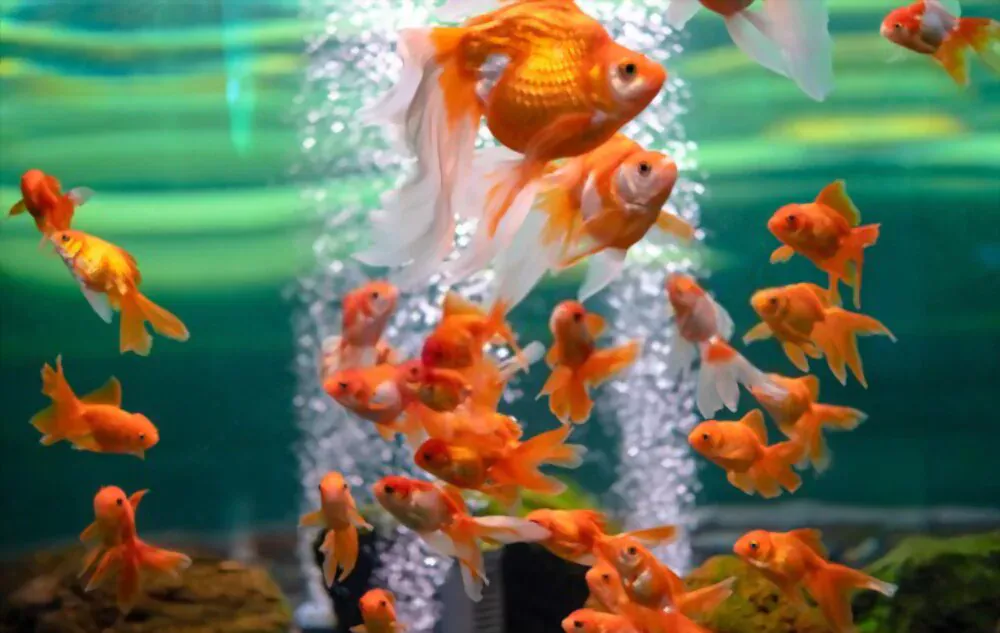
An overcrowded tank isn’t just an eyesore; it’s also bad for your fish. If you have too many fish in a tank, their waste will build up and create ammonia, which can lead to fish disease. The same goes for competition over space, goldfish can become aggressive with one another if they feel crowded.
You should also be careful about adding new pets too quickly, even if it’s just one more goldfish. While this might seem like a good way to boost your pet population quickly and cheaply, adding a new pet without allowing time for all of them to get used to each other again can cause aggression between your old and new goldfish as well as contribute to disease in the whole tank.
Conclusion
If you are having any doubts about your goldfish’s health, immediately check his/her water quality and look for any signs of infection or illness. If you notice that your goldfish is sick, take him/her to a veterinarian for treatment. The best way to keep your goldfish healthy is by providing them with the right environment and food; this way, they will be able to grow normally without getting sick frequently!

